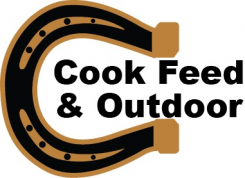Cook feed and Outdoor
There is so much more to feeding livestock than simply filling troughs and hoping for the best! Animal nutrition plays a crucial role in productivity, animal welfare, and sustainable farm management in modern agriculture. Correcting diet can lead to healthier animals, higher yields, and improved profitability. However, in the face of an abundance of feed options, how can you determine what constitutes a superior animal diet?
Knowing what makes a great feed goes beyond ingredient lists—it also includes digestibility, bioavailability, nutritional balance, and the long-term effect on animal and environmental health.
Principles of Livestock Nutrition
Fundamentally, all great livestock diets must be formulated to provide every nutrient needed by animals for growth, reproduction, lactation, and maintenance. Carbs for energy, proteins for building muscle and tissue, fats for energy density and hormone regulation, plus vitamins and minerals to boost immune function and improve overall health. Nutritional needs, however, vary significantly by species, breed, age, production goals, and environmental factors. A high-producing dairy cow, for example, will have dramatically different dietary needs than a growing pig or a pasture-raised broiler chicken. The first step toward optimizing performance is feeding according to these individual needs.

The Role of Forage and Fiber
Forage plays a major role in ruminant nutrition. The importance of rumen development and function means that high-quality hay, silage, or pasture not only supplies the necessary fiber but also helps maintain appropriate rumen function and digestion. The composition of a superior feed, which ensures stability, is particularly important for the correct functioning of gut motility and the prevention of pathologies such as metabolic disorders (acidosis or bloat) caused by improper feeding practices. For non-ruminants, including pigs and poultry, fiber plays a more functional role in digestion and gut health. While their fiber-fermenting ability is limited, some types of soluble fiber, such as beet pulp or soybean hulls, can be beneficial in moderation.
Delivering Lipids and Proteins
-
Feed and protein meals, such as grains, are concentrated, providing the dense energy and amino acids that higher-performing animals require. Common energy sources include corn, barley, and wheat, while soybean meal and canola meal are commonly used as protein sources.
-
Best formulation: However, not all concentrates are the same. Superior equine formulations are specially balanced to provide energy and protein sources appropriate to the animal’s life stage and level of production. Excess energy can lead to obesity or metabolic problems, while insufficient protein can hinder growth and reduce milk or egg production.
-
Quality control is another big deal. Poor storage practices or grains contaminated with mycotoxins can affect animal health and performance. A great animal diet utilizes properly tested and processed concentrates.
The Role and Impact of Feed Additives & Nutritional Supplements
Nutritional Support:
As diets are fine-tuned and health is supported in any animal nutrition practice, the use of a range of supplements has become an integral part of modern animal nutrition. They are vitamins, trace minerals, enzymes, probiotics, prebiotics, and organic acids—all designed to improve feed conversion, boost immunity, and help cut down on antibiotics.
Mineral chelates, for example, are more bioavailable than inorganic alternatives and can enhance absorption and performance. Similar to probiotics, they can also support digestion and help balance the gut microbiota, especially during times of stress and transition.
An exceptional diet doesn’t depend heavily on supplements, but rather combines them intentionally, based on research and what an on-farm challenge requires.
Sustainability and Ethical Feeding Convention
The best livestock diets today are not only nutritionally sound, but also address environmental and ethical concerns. By minimizing the carbon footprint of production, as well as waste and resource use, sustainable equine horse feed options are another avenue for reducing aquaculture’s environmental impact. These include utilizing local ingredients, efficiently using agricultural by-products, and minimizing dependence on non-renewable inputs. An open-source ingredient and manufacturing process is key to both producers and consumers.
Formulation and Professional Support
Livestock nutrition does not have a one-size-fits-all approach. What differentiates better feed is not the ingredients, but the people behind it, nutritionists, veterinarians, and farmers who have worked together to create custom rations designed with specific objectives in mind. A dynamic feeding program includes feed analysis, performance monitoring, and routine ration adjustments. Benefits such as automated feeders, smart sensors, and data-driven formulation tools are improving precision and consistency on farms of all sizes.
Conclusions: Feeding for Performance, Health, and Future Resilience
A good diet for animals is part art and part science. It adjusts according to the requirements of different animals and production systems, striking a balance between energy, protein, fiber, and micronutrients. The best feed options deliver more than just simple nourishment—they promote lifelong vitality, encourage productivity, and support sustainable farming practices.
For more updates and details visit our Facebook Profile!
